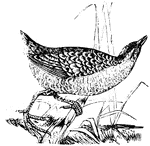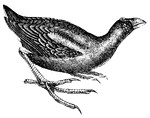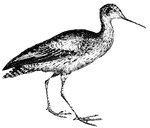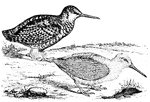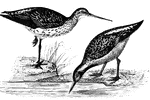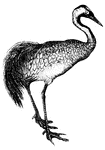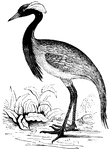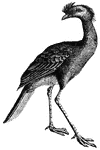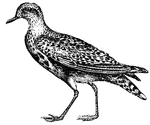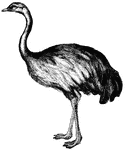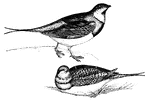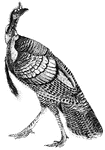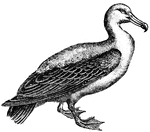
Albatross
The Albatross is the largest and most bulky of all the birds which fly over the surface of the sea.

Flamingo
The flamingo is found in Africa and Asia. The color of the plumage is a deep brilliant scarlet, except…

Jacana
These birds have long toes and claws that permit them to walk easily across leaves of tropical aquatic…
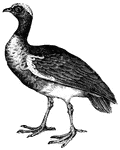
Screamer
Screamers live near moist marshy locations or sandy streams. They do not swim, but walk along the vegetation…

Screamer
Screamers live near moist marshy locations or sandy streams. They do not swim, but walk along the vegetation…
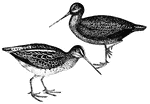
Snipe
The snipe does not live so solitary a life as the Woodcock; it is occasionally seen in flocks.

Curlew
These birds are characterized by their curved beaks. Their food consists of insects, worms, slugs, aquatic…

Sacred Ibis
Wading birds with long, slender bills found in warmer climates of both hemispheres. The Sacred ibis…

Spoonbill
The bill of the spoonbill is approximately four times longer than its head. It ends in the shape of…
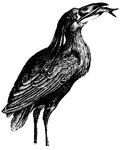
Boatbill Heron
This heron has a bill like an overturned boat. It also has a beautiful black crest that falls down behind…

Heron
Herons are found on the edges of rivers, lakes and marshes and live on fishes, reptiles and sometimes…

Oystercatcher
Oyster-catchers are noisy birds. The bill is powerful for opening mussels, oysters and other shell-fish.

Lapwing
Lapwings may often be seen settling in fields recently ploughed, where they can find an ample supply…
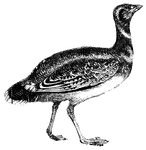
Bustard
Bustards are stocky birds with strong legs. They fly with difficulty, and do not fly unless necessary.
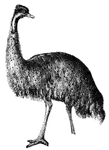
Emu
The Emu, a native of Australia, is nearly as large as the Ostrich, but has shorter legs and neck and…

Kiwi
The Kiwi, a native of New Zealand is closely related to the Ostrich but much smaller. It is also a flightless…

Ruffed Grouse
The ruffed grouse is an American bird that likes hill-sides densely covered with evergreens or birch.
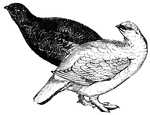
Ptarmigan
The Ptarmigans have feet much like those of a hare. Their legs and toes and soles of the feet are covered…
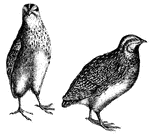
Quail
The quail has a small beak, a short back toe inserted high up, tarsi furnished with a rudimentary spur…

Pheasant
The pheasant prefers wooded slopes or marshy plains. They eat grain, berries, worms and insects.

Golden Pheasant
The pheasant prefers wooded slopes or marshy plains. They eat grain, berries, worms and insects.
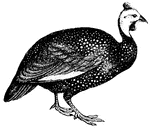
Guinea Fowl
Guinea fowls have small heads for their size; beak and neck short; the tail equally short and drooping.

Peacock
At the commencement of spring the male displays to the females all the splendor of his plumage; he struts,…
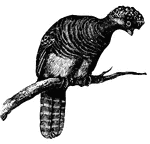
Curassow
Naturally very gentle, they readily yield to captivity, when they become familiar, and evince pleasure…
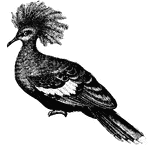
Great-crowned Pigeon
The plumage of this bird is of a beautiful grayish blue; its head is ornamented with a pretty plume…

Wood Pigeon
The wood pigeons are the largest species of this family; their plumage is slaty grey, with bluish, green,…

Macaw
The Macaws, the largest of the Parrots, are recognizable from their bare cheeks and long tapering tails.
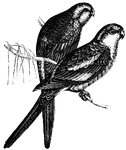
Ringed Parakeet
Sociable in their dispositions, they assemble in more or less numerous bands, and make the forests re-echo…

Love birds
Love birds are the smallest of this group; their plumage varies in shades according to the climates.…

Grey Parrot
Parrots are much appreciated on account of their memory, and also for their habit of repeating what…

Grey Parrot
Parrots are much appreciated on account of their memory, and also for their habit of repeating what…
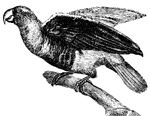
Green Parrot
Parrots are much appreciated on account of their memory, and also for their habit of repeating what…
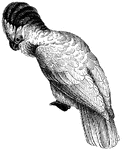
Cockatoos
Parrots are much appreciated on account of their memory, and also for their habit of repeating what…

Toucan
In eating, they seize the fruit with the extremity of the beak, make it bounce up in the air, receive…



